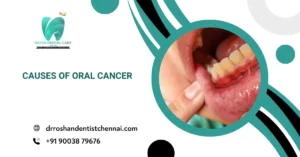When a child’s permanent tooth gets injured or has a deep cavity at a young age, it can affect the natural development of that tooth’s root. But thankfully, there’s a gentle dental procedure called Apexogenesis that can help save the tooth and allow it to continue growing naturally.
What is Apexogenesis?
Apexogenesis is a special procedure we use in young permanent teeth that are still developing. When the tooth’s nerve is exposed but not completely damaged, we try to protect it — so that the root can finish forming on its own.
Think of it like protecting a young plant so its roots can grow strong. Similarly, in Apexogenesis, we protect the soft tissue inside the tooth (called the pulp) and give it a chance to grow fully.
When is it Needed?
Apexogenesis is recommended when:
- A young permanent tooth has a deep cavity
- There’s been a tooth injury, causing part of the pulp to be exposed
- The root is still forming, and we want to save the nerve inside
The goal is to keep the nerve alive and healthy, so the tooth can continue to grow naturally and stay strong.
How is it Done?
It’s simpler than it sounds! Here’s what usually happens:
- We remove only the damaged part of the nerve (not the whole pulp).
- A special healing material (like calcium hydroxide or MTA) is gently placed inside.
- This helps the remaining healthy pulp continue to support root growth.
- The tooth is then sealed and restored, usually with a filling or a crown.
Over time, we check how the root is forming with follow-up visits and X-rays.
Will My Child Be in Pain?
Not at all! The procedure is:
✅ Done under local anesthesia — your child won’t feel a thing
✅ Safe and gentle
✅ Designed to save the natural tooth
✅ Usually completed in just one or two visits
After the treatment, your child might feel a little sensitivity, but it’s temporary and mild.
Why is Apexogenesis Important?
If a young tooth’s root doesn’t fully form, the tooth can become weak and prone to future problems — or even be lost too early. Apexogenesis helps:
- The root become strong and fully developed
- Avoid complicated treatments later
- Maintain the natural tooth for many years
It’s a smart and conservative way to give your child the best chance at a healthy smile.
We’re Here for Your Child’s Smile
Every child’s tooth is precious — especially when it’s still growing. If your child has had a tooth injury or deep cavity in a permanent tooth, don’t worry. Apexogenesis can often save the tooth and protect their smile.
Feel free to visit us or ask any questions. We’re here to make sure your little one’s dental care is gentle, stress-free, and focused on the long-term.

Read also: Apexification




